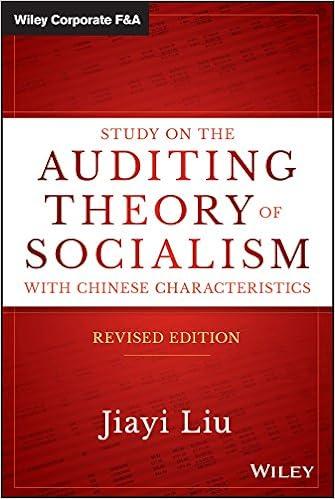The following financial statements apply to Karl Company:
Calculate the following ratios for 2018 and 2019. Since 2017 numbers are not presented, do not use averages when calculating the ratios for 2018. Instead, use the number presented on the 2018 balance sheet.



2019 2018 $420,000 16,000 436,000 $350,000 10,000 360,000 252,000 42,000 22,000 6,000 42,000 364,000 $ 72,000 206,000 38,000 20,000 6,000 36,000 306,000 $ 54,000 Revenues Net sales Other revenues Total revenues Expenses Cost of goods sold Selling expenses General and administrative expenses Interest expense Income tax expense Total expenses Net income Assets Curre asse Cash Marketable securities Accounts receivable Inventories Prepaid expenses Total current assets Plant and equipment (net) Intangibles Total assets Liabilities and Stockholders' Equity Liabilities Current liabilities Accounts payable Other Total current liabilities Bonds payable Total liabilities Stockholders' equity Common stock (100,000 shares) Retained earnings Total stockholders' equity Total liabilities and stockholders' equity $ 8,000 2,000 70,000 200,000 6,000 286,000 210,000 40,000 $536,000 $ 16,000 2,000 64,000 192,000 4,000 278,000 210,000 $488,000 $ 80,000 34,000 114,000 132,000 246,000 $108,000 30,000 138,000 134,000 272,000 230,000 60,000 290,000 $536,000 230,000 (14,000) 216,000 $488,000 Required Calculate the following ratios for 2018 and 2019. Since 2017 numbers are not presented, do not use averages when calculating the ratios for 2018. Instead, use the number presented on the 2018 balance sheet. a. Net margin. (Round your answers to 2 decimal places.) b. Return on investment. (Round your answers to 2 decimal places.) c. Return on equity. (Round your answers to 2 decimal places.) d. Earnings per share. (Round your answers to 2 decimal places.) e. Price-earnings ratio (market prices at the end of 2018 and 2019 were $11.88 and $9.54, respectively). (Round your intermediate calculations and final answers to 2 decimal places.) f. Book value per share of common stock. (Round your answers to 2 decimal places.) g. Times interest earned. Exclude extraordinary income in the calculation as they cannot be expected to recur and, therefore, will not be available to satisfy future interest payments. (Round your answers to 2 decimal places.) h. Working capital. i. Current ratio. (Round your answers to 2 decimal places.) j. Quick (acid-test) ratio. (Round your answers to 2 decimal places.) k. Accounts receivable turnover. (Round your answers to 2 decimal places.) 1. Inventory turnover. (Round your answers to 2 decimal places.) m. Debt to equity ratio. (Round your answers to 2 decimal places.) n. Debt to assets ratio. (Round your answers to the nearest whole percent.) Answer is complete but not entirely correct. a. % 2019 17.14 14.06 28.46 2018 15.43 11.07 25.00 % % % b. % C. % s 0.72 s 0.54 e. 13.25 times 22.00 times f. S 2.90 S 2.16 9. > times Net margin Return on investment Return on equity Earnings per share Price-earnings ratio Book value Interest earned Working capital Current ratio Quick (acid-test) ratio Accounts receivable turnover Inventory turnover Debt to equity ratio Debt to assets ratio h. 16.00 $ 140,000 2.01 0.62% i. 20.00 times $ 172,000 2.51 2.01 X 6.00 times 1.26 times 84.83 X 46 % k. 5.47 times 1. 1.07 times m. 125.93 X n. 56 %









